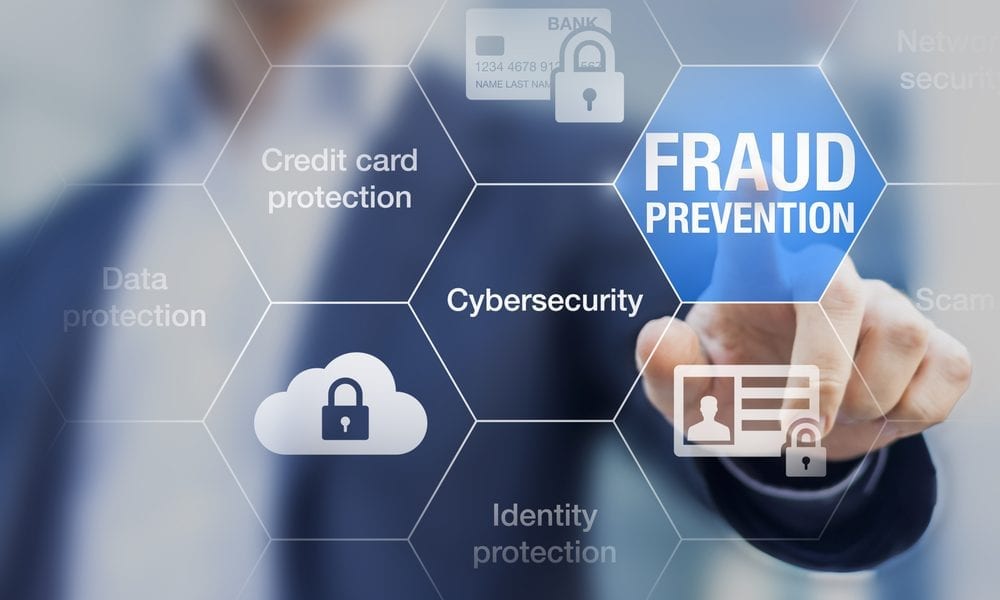Customer Master Data Model
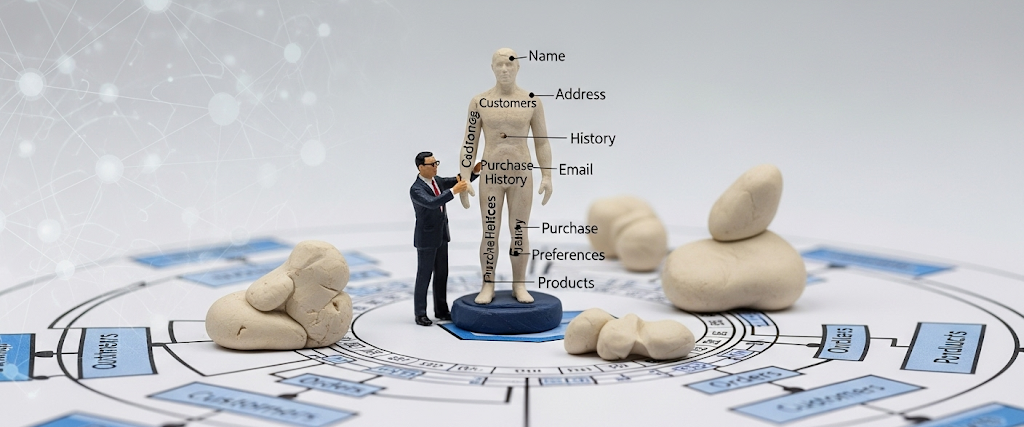
To truly drive informed decision-making and unlock the full potential of your customer relationships, a well-structured and comprehensive customer master data model is absolutely essential. This model, at the heart of your Customer Master Data Management, acts as the blueprint for how you understand and interact with your customers. With the Pretectum Customer Data Management solution, organizations have the flexible SaaS platform to build and manage such a sophisticated model, ensuring data accuracy, accessibility, and the ability to generate valuable insights.
A adaptable customer master data model, built within Pretectum’s adaptable framework, can go beyond just basic contact information. It may encompass a wide array of attributes that paint a complete picture of your customer.
Pretectum’s ability to define one or more data models (schemas) for data drawn from diverse sources, coupled with its strong data typing and data validations, makes it the ideal environment for constructing such a detailed and dynamic model. While the primary intent of Pretectum is people master data management, its flexibility means data can even be transactional, allowing for a truly holistic view.
Consider then, some of the most common customer data attributes and how you might set them up. These also become a foundational aspect of how you might think about data tags and classifying your attributes through metadata.
We’ve grouped these but they could appear at any point in the evolution of your customer profiles.
- Basic Identification Attributes
- Demographic Attributes
- Transactional Attributes
- Behavioral Attributes
- Engagement Attributes
- Derived Attributes
Basic Identification Attributes
These are the foundational elements for uniquely identifying and contacting your customers. Pretectum’s schema definition allows for precise data typing to ensure these critical fields are always accurate.
- CustomerID: A unique identifier for each customer. Pretectum’s ability to ingest data from various sources means it can consolidate and manage these identifiers across disparate systems.
- FirstName & LastName: Essential for personalized communication.
- FullName: A consolidated field often derived or assembled for display purposes.
- Email: A primary digital contact point. Pretectum supports email as a content data type.
- Phone: Another crucial contact method.
- DateOfBirth: Important for age-based segmentation and compliance.
- Gender: A demographic identifier that can be validated against business area data in Pretectum.
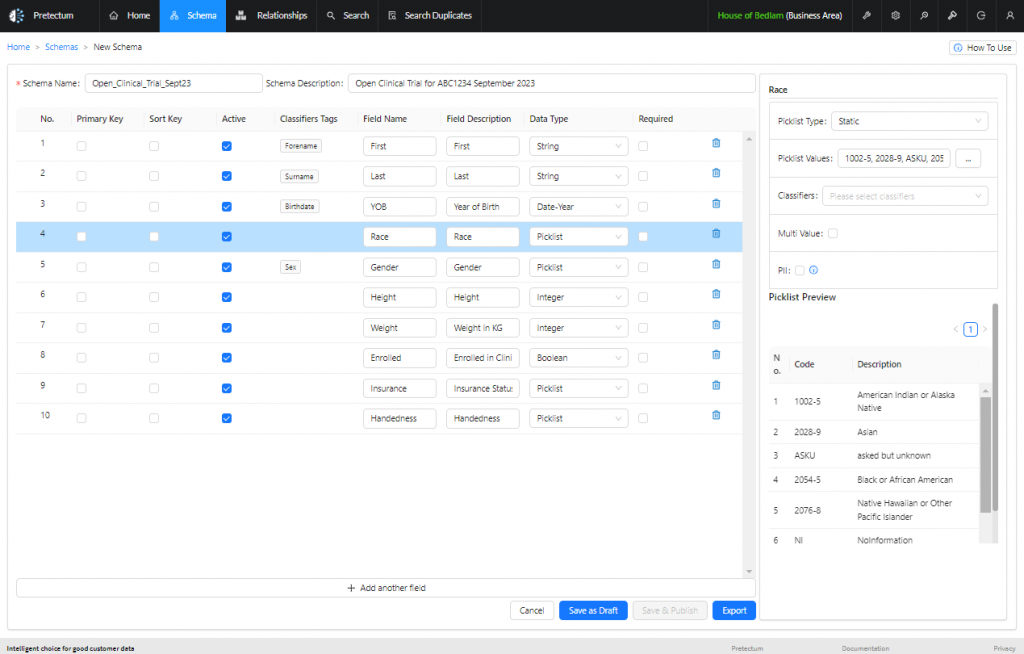
Demographic Attributes
Demographic information provides context about your customers, enabling segmentation and targeted marketing. Pretectum’s flexible schema can easily incorporate these, and business area data can be used for validation.
- Address, City, State, ZipCode, Country: Geographical identifiers vital for localized marketing, shipping, and understanding regional trends. Pretectum supports text and ISO codes for country validation.
- Language: Key for delivering content in the customer’s preferred language.
- MaritalStatus: Can be valuable for specific product or service offerings.
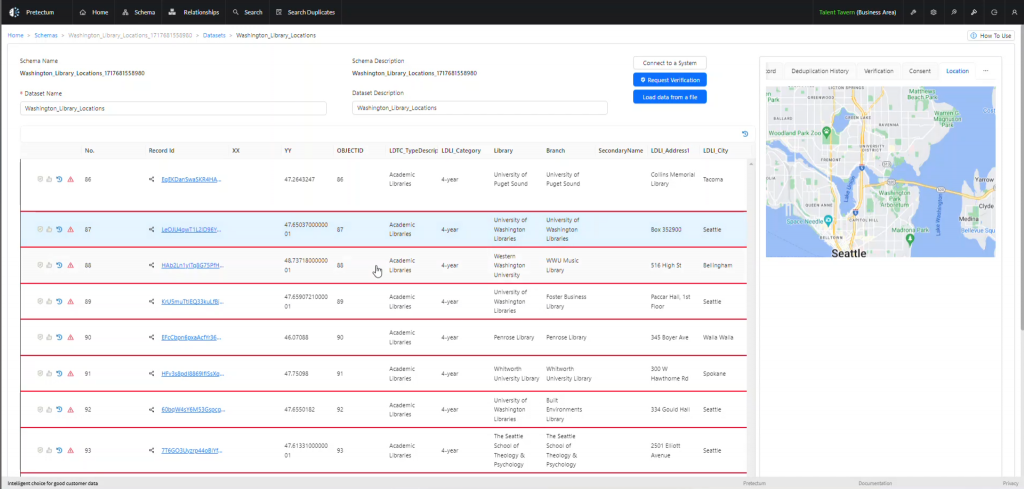
Transactional Attributes
These attributes capture the history of customer interactions that involve purchases or financial exchanges. Pretectum, while primarily for master data, can ingest transactional data if defined in the schema, making these attributes manageable. There are a number of use cases that benefit from Transaction Attributes.
- TotalSpent: Cumulative spending over time, indicating customer value.
- AverageOrderValue: Insights into spending habits per transaction.
- NumberOfOrders: Frequency of purchases.
- LastOrderDate & FirstOrderDate: Markers for customer engagement and longevity.
- HighestOrderValue & LowestOrderValue: Indicators of purchasing range.

Behavioral Attributes
Understanding how customers interact with your digital properties offers deep insights into their preferences and intentions. Pretectum’s flexible schema allows for the inclusion of diverse data types like text for search history or clickstream data. There are a number of use cases that benefit from Behavioral Attributes.
- NumberOfVisits: Frequency of website or app engagement.
- AverageTimeOnSite: Indicates engagement depth.
- MostViewedPages: Highlights product or content interest.
- SearchHistory: Reveals specific customer needs or desires.
- ClickStreamData: Detailed navigation paths providing granular behavioral insights.

Engagement Attributes
These attributes measure how customers interact with your brand beyond transactions, focusing on communication and loyalty. Pretectum’s schema can hold text-based communication preferences or numerical feedback scores. There are a number of use cases that benefit from Engagement Attributes.
- CommunicationPreferences: Opt-in/out status for various communication channels.
- SubscriptionStatus & SubscriptionStartDate/EndDate: Relevant for recurring service models.
- FeedbackScore: Direct sentiment from customer surveys or reviews.
- LoyaltyPoints: Track participation in loyalty programs.

Derived Attributes
These are not directly collected but are calculated or inferred from other attributes. They offer powerful predictive capabilities and segmentation opportunities. While Pretectum ingests the raw data, these derivations would typically happen in a connected analytics layer, leveraging Pretectum’s high-quality output. There are a number of use cases that benefit from Derived Attributes.
- CustomerLifetimeValue (CLV): A projection of the total revenue a customer is expected to generate over their relationship with your business.
- ChurnProbability: The likelihood of a customer discontinuing their relationship.
- NextBestAction: Suggested actions for sales, marketing, or service based on customer profiles.
- SegmentMembership: Assigning customers to specific segments for targeted strategies.

Best Practices
Beyond simply identifying attributes, the success of any customer data management platform hinges on how you design and maintain your data model. Pretectum is engineered with capabilities that directly support these best practices, transforming theoretical ideals into operational realities.
Ensure Data Quality Through Regular Cleansing, Validation, and Enrichment
Data quality is paramount. Pretectum addresses this head-on:
- Validation: Its data models can be enhanced with strong data typing and data validations. During manual record entry, bad data is actively blocked. For data brought in via CSV imports, integrations, or streams, lightweight ETL processes use Excel-like syntax for attribute-level transformation, and data is then flagged as matching validation or not, allowing immediate identification of quality issues.
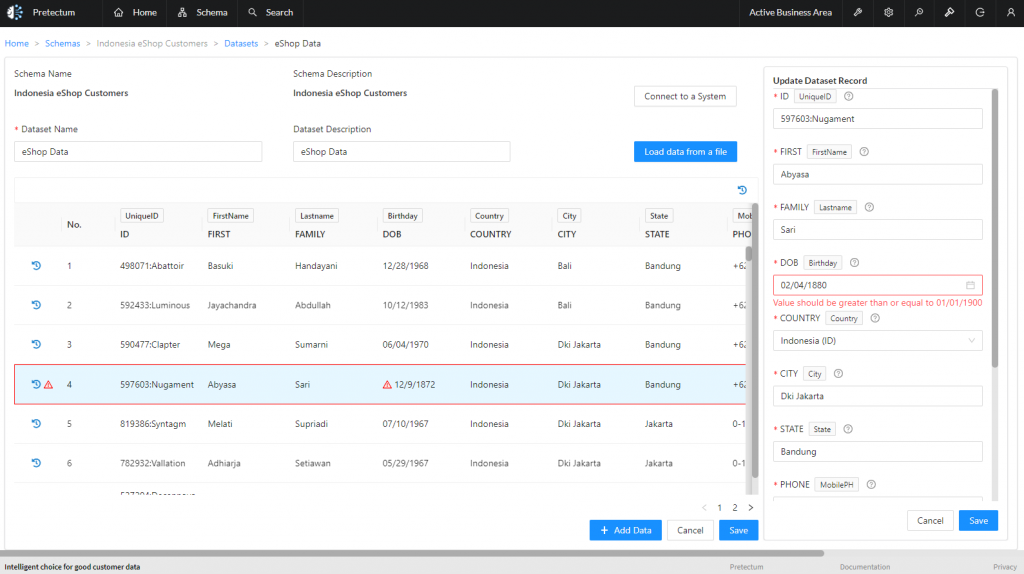
Cleansing: Pretectum features a powerful batch-based duplicate matching process that can identify commonalities across one or more business areas and datasets. These identified matchsets can then be used to nominate a “survivor” record, with a second batch process allowing users to merge or purge records based on configurable survivorship rules, effectively cleaning duplicates.
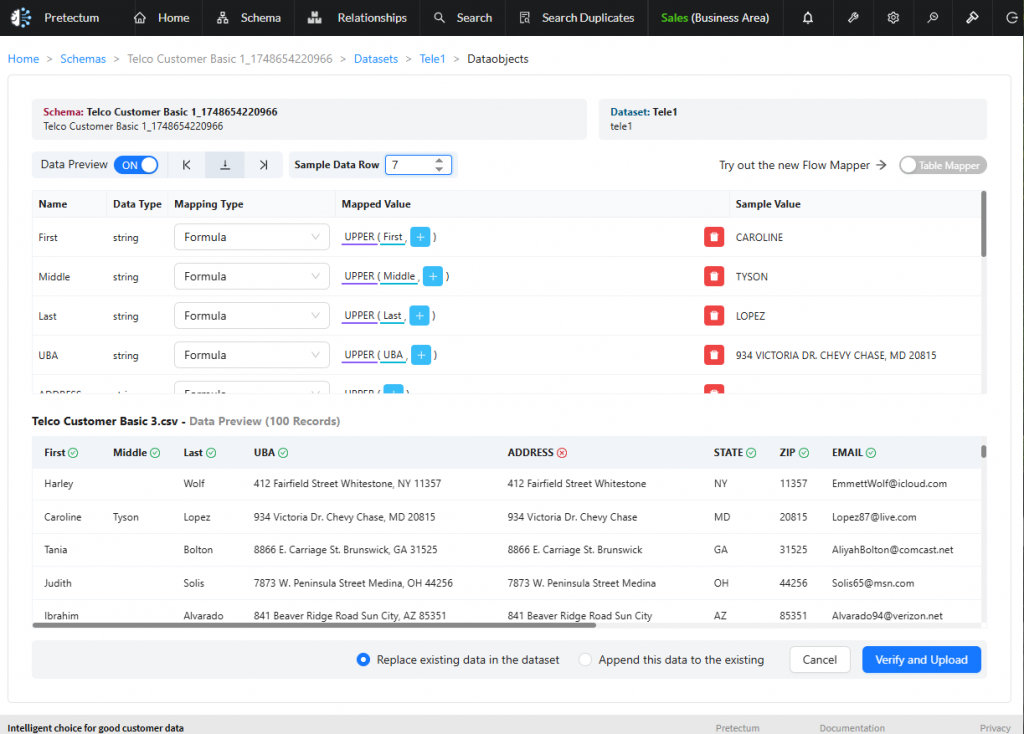
- Self-Service Validation: Pretectum uniquely offers a self-service data validation and consent granting process. This empowers the customer directly to receive a one-time use email, allowing them to edit, redact, and self-consent to the data held in the system, ensuring data accuracy from the source and fostering trust.
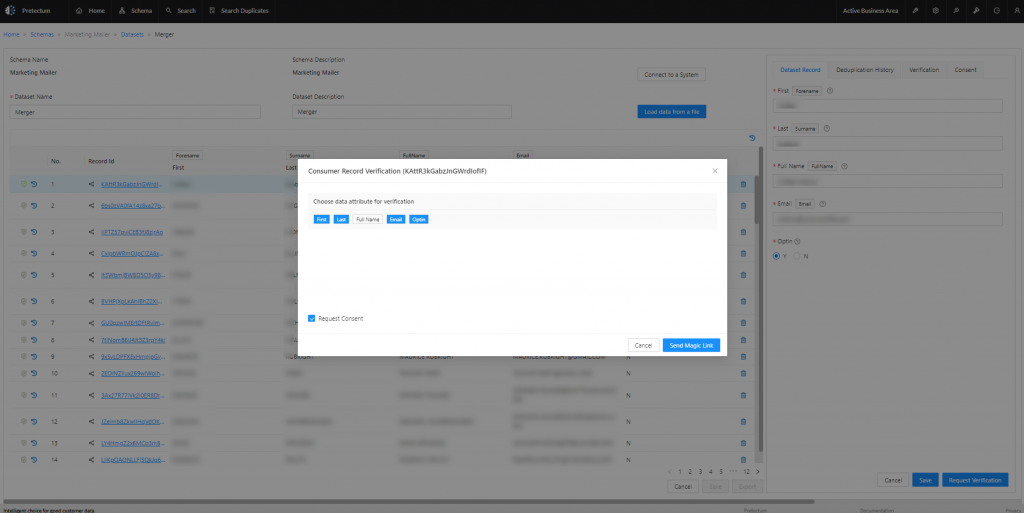
Implement Data Governance and Stewardship to Define Standards and Ownership
Robust data governance is crucial for consistent and reliable data management. Pretectum provides the tools:
- Data Tagging/Business Glossary: The platform’s flexible and configurable data tagging functionality serves as a business glossary, allowing attributes of the models to be classified. This aids in defining clear data standards and understanding data meaning across the organization. AI prompts can even accelerate the creation of these focused tags.
- Role-Based Access Controls (RBAC): Pretectum offers a sophisticated and configurable permissions matrix. Users can have view-only access, or specific permissions for editing. Importantly, PII masking is automatic, and unmasking requires re-entering credentials for users with the specific “PII data unmasking” permission, with all such actions logged in an audit log. This ensures clear ownership and controlled access to sensitive information.
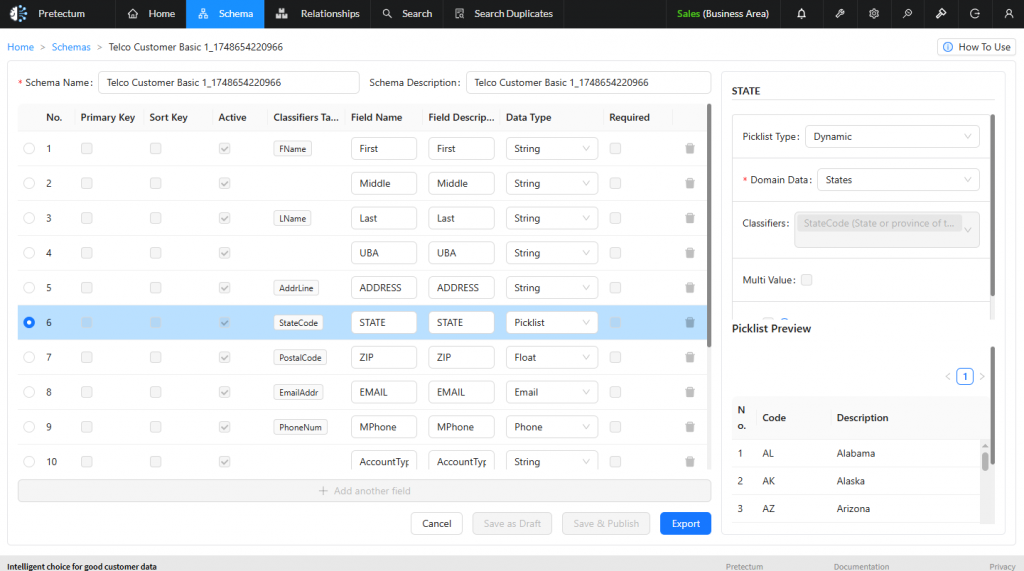
Integrate Data from Various Touchpoints to Provide a Unified View of the Customer
A complete customer view requires integrating data from diverse sources. Pretectum is built for this:
- The platform is designed to draw data in from diverse sources, including CSV imports, integrations via JDBC or REST APIs in batches, or via subscribed streams.
- Its ability to define multiple data models across partitioned business areas allows for the consolidation and harmonization of customer data, truly working towards that single, accurate, and complete view of your customers across all touchpoints and systems.
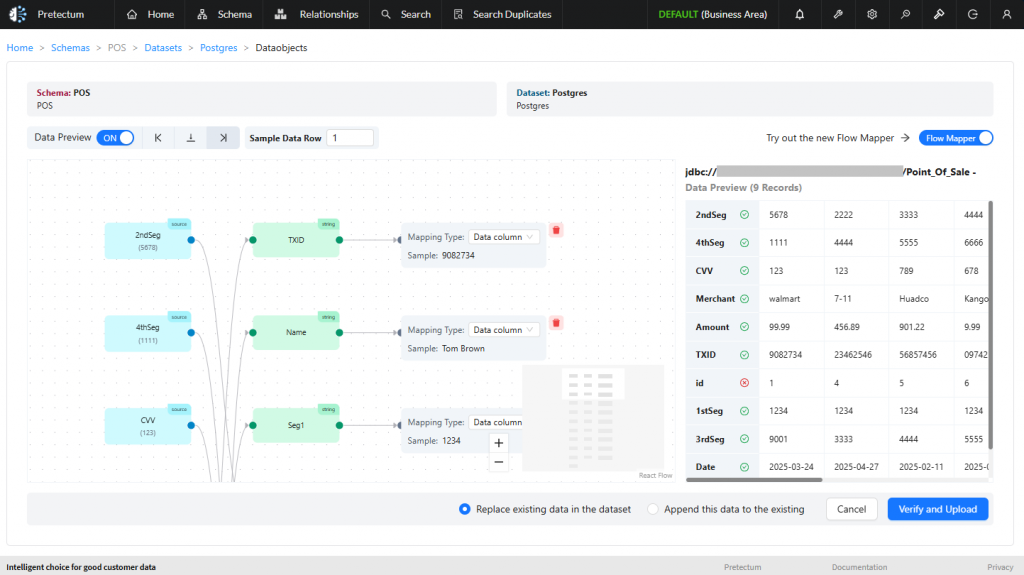
Enable Data Security and Privacy to Protect Sensitive Information
Protecting sensitive customer information is non-negotiable. Pretectum prioritizes this:
- Automatic PII Masking: If data is marked as PII in the schema, it’s automatically masked once it lands in the dataset.
- Controlled Unmasking: Revealing masked data requires specific user permissions and re-authentication, and this crucial action is logged in an audit log, providing a clear trail for compliance and security monitoring.
- Granular Permissions: The RBAC matrix allows for precise control over who can view, edit, or unmask data, ensuring adherence to privacy regulations.
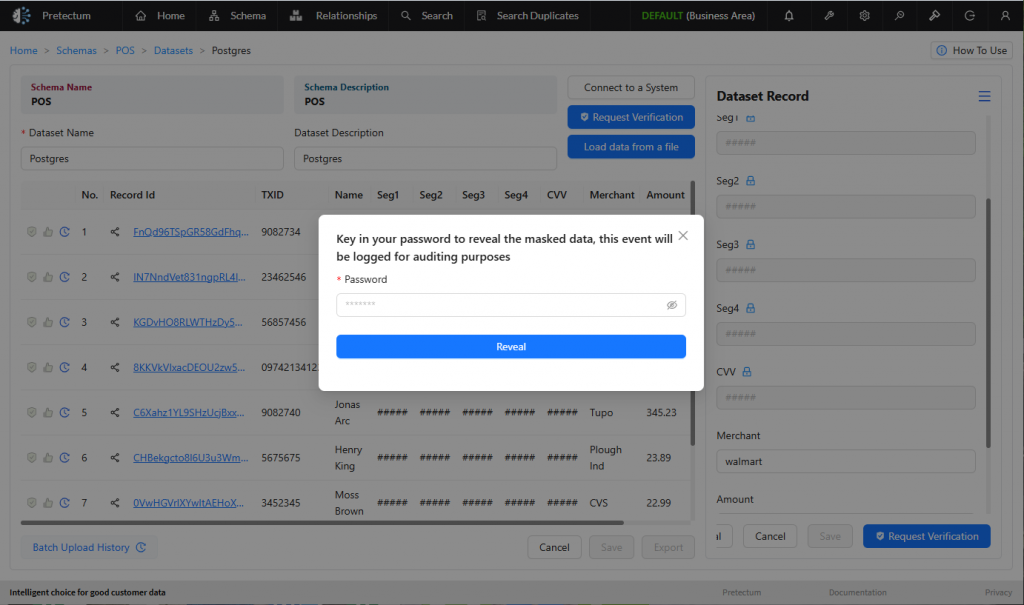
Foster Cross-Functional Collaboration
Align Customer Data Usage Across your whole Organization
Effective CMDM is a collaborative effort. Pretectum facilitates this by providing a common platform and shared understanding:
- The data tagging functionality acts as a shared business glossary, ensuring everyone uses the same definitions and classifications for data attributes.
- The AI-powered elastic search allows users across departments to build complex searches using natural language questions and contextual tags, reducing the need for specialized knowledge and fostering broader data utilization and collaboration. The search results are scoped by user permissions, ensuring relevant and secure access.
Continuously Monitor and Improve the Model Based on Evolving Business Needs and Industry Trends
A master data model is not static; it must evolve. Pretectum supports continuous improvement:
- Flexible Data Models: Data models (schemas) can be enhanced and every dataset can be edited, appended to, or replaced according to the needs of the business, allowing for agile adaptation.
- Audit Logging: The comprehensive audit log for sensitive actions (like PII unmasking, self-service consent) provides insights into data usage and changes, supporting ongoing monitoring.
- Validation Feedback: The flagging of data against validation rules during ingestion provides continuous feedback on data quality, guiding improvements to the model and ingestion processes.
By incorporating these attributes and leveraging Pretectum’s inherent capabilities and data modeling best practices, organizations can create a truly comprehensive customer master data model. This empowers them to make informed decisions, deliver personalized customer experiences, and achieve data-driven excellence, ensuring their CMDM practice is not just robust but also future-ready. Contact us to learn more. #LoyaltyIsUpForGrabs













